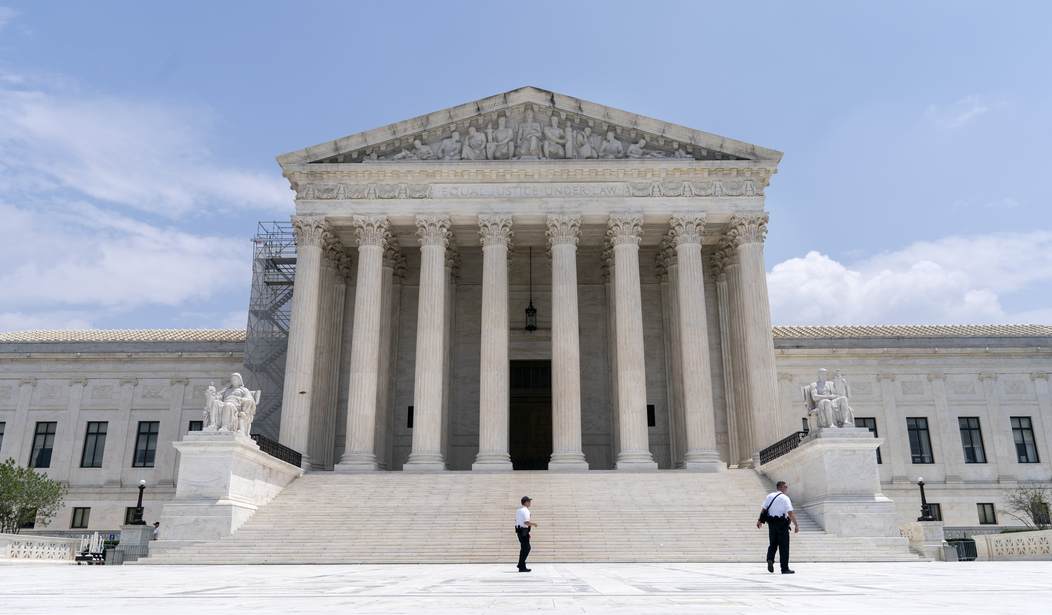The Supreme Court ruled 6-3 in Garland v. Cargill that the ATF exceeded its statutory authority by classifying bump stocks as "machineguns" in the wake of the 2017 Las Vegas shooting.
Written by Justice Thomas, the majority opinion released Friday morning explains that "Congress could have linked the definition of 'machinegun' to a weapon's rate of fire" in the National Firearms Act of 1934 but "it instead enacted a statute that turns on whether a weapon can fire more than one shot 'automatically...by a single function of the trigger.'"
"We hold that a semiautomatic rifle equipped with a bump stock is not a 'machinegun' because it cannot fire more than one shot 'by a single function of the trigger,'" Thomas writes. "And, even if it could, it would not do so 'automatically.'" As such, the Supreme Court arrived at its ruling that the "ATF therefore exceeded its statutory authority by issuing a Rule that classifies bump stocks as machineguns."
"It is never our job to rewrite...statutory text under the banner of speculation about what Congress might have done," Thomas emphasizes in his conclusion.
The majority opinion includes a lengthy explanation — with diagrams — of the differences between a machine gun as defined by Congress and the effect of using a bump stock.
The gist:
Nothing changes when a semiautomatic rifle is equipped with a bump stock. The firing cycle remains the same. Between every shot, the shooter must release pressure from the trigger and allow it to reset before reengaging the trigger for another shot. A bump stock merely reduces the amount of time that elapses between separate “functions” of the trigger. The bump stock makes it easier for the shooter to move the firearm back toward his shoulder and thereby release pressure from the trigger and reset it. And, it helps the shooter press the trigger against his finger very quickly thereafter. A bump stock does not convert a semiautomatic rifle into a machinegun any more than a shooter with a lightning-fast trigger finger does. Even with a bump stock, a semiautomatic rifle will fire only one shot for every “function of the trigger.” So, a bump stock cannot qualify as a machinegun under §5845(b)’s definition.
Recommended
"As with any semiautomatic firearm, the trigger still must be released and re-engaged to fire each additional shot," Thomas reiterates of bump stock use. "On more than 10 separate occasions over several administrations, ATF consistently concluded that rifles equipped with bump stocks cannot 'automatically' fire more than one shot 'by a single function of the trigger.'"
The case came about after the ATF issued a rule to "clarify" that bump stocks are machine guns after the 2017 Las Vegas shooting saw 58 people killed and hundreds wounded by an assailant using semiautomatic rifles with bump stocks. The ATF rule — which "repudiated ATF's previous guidance that bump stocks did not qualify as 'machineguns,'" Thomas notes — required bump stock owners to destroy or surrender them to avoid criminal prosecution.
This case is a great example of what's wrong with the regulatory system.
— Carrie Severino (@JCNSeverino) June 14, 2024
ATF interprets the law one way. Then a big event creates political pressure and, rather than doing the proper legislative process, they realize it would be faster and easier just to "abruptly change…
The case's namesake, Michael Cargill, surrendered two bump stocks under protest after the final rule took effect in 2018 and subsequently filed a lawsuit based on the Administrative Procedure Act arguing the ATF lacked the statutory authority to implement the bump stock rule because they do not meet the legal definition of machine gun.
As Justice Thomas reminds in his opinion, "ATF’s about-face drew criticism from some observers, including those who agreed that bump stocks should be banned" such as the late Senator Dianne Feinstein. She "warned that ATF lacked statutory authority to prohibit bump stocks, explaining that the proposed regulation 'hinge[d] on a dubious analysis' and that the “'gun lobby and manufacturers [would] have a field day with [ATF’s] reasoning' in court."

























Join the conversation as a VIP Member